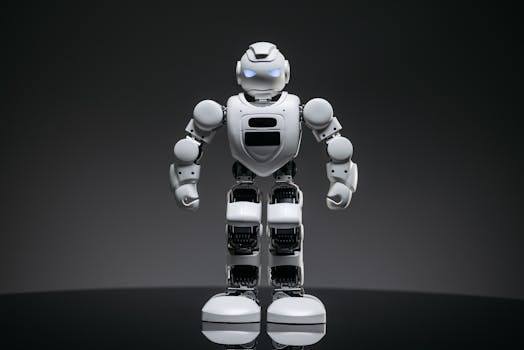AI in Everyday Gadgets: What’s Next?
Artificial Intelligence (AI) has been making waves in the tech industry, revolutionizing the way we interact with and use everyday gadgets. From virtual assistants to smart home devices, AI has become an integral part of our daily lives. But what’s next for AI in everyday gadgets? What new innovations can we expect to see in the near future? In this article, we will delve into the world of AI and explore what’s in store for us in terms of everyday gadgets. Get ready to be amazed by the endless possibilities that AI has to offer!
The Rise of Everyday Gadgets with AI
The integration of AI in everyday gadgets has been on a steady rise over the past few years. From smartphones to smart refrigerators, AI technology has been incorporated into a wide range of gadgets, making them more efficient, personalized, and convenient for users. The main goal of AI in these gadgets is to make them smarter and more responsive, allowing them to continuously learn from their users and adapt to their needs.
One of the most prominent examples of AI in everyday gadgets is virtual assistants like Apple’s Siri, Amazon’s Alexa, and Google Assistant. These AI-powered assistants can understand and respond to voice commands, allowing users to perform a variety of tasks without even lifting a finger. From setting reminders and alarms to controlling smart home devices, virtual assistants have become indispensable in our daily routines.
In addition to virtual assistants, AI technology is also being utilized in everyday gadgets like smartwatches and fitness trackers. These devices use AI algorithms to track and analyze user data, providing insights into their fitness levels, sleep patterns, and overall health. This allows users to make informed decisions and live a healthier lifestyle.
AI-Powered Everyday Gadgets: What’s Next?
1. Enhanced Personalization
With the increasing use of AI in everyday gadgets, we can expect to see a greater level of personalization in these devices. AI algorithms will continue to learn from user patterns, preferences, and behaviors, allowing gadgets to anticipate their needs and provide tailored experiences. For example, a smart TV equipped with AI technology could automatically switch to a user’s favorite channel or recommend shows based on their viewing history.
2. Smarter Home Automation
The integration of AI in smart home devices is set to revolutionize the way we interact with our homes. As AI technology evolves, we can expect to see smarter home automation systems that can sense and respond to human behaviors. This means that everyday gadgets like thermostats, lighting systems, and security cameras will become more intuitive, making our homes more comfortable, efficient, and secure.
3. Improved Healthcare
The potential of AI in healthcare is vast, and everyday gadgets are set to play a crucial role in this field. With the use of AI-powered devices like smartwatches and health trackers, individuals can monitor their vital signs and share the data with healthcare professionals in real-time. This will allow for more accurate diagnosis and proactive treatments, ultimately improving the quality of healthcare.
4. Greater Assistance for People with Disabilities
AI technology in everyday gadgets is also being utilized to assist people with disabilities. For instance, the development of AI-powered prosthetic limbs and hearing aids is providing a greater level of independence and functionality for individuals with physical disabilities. As AI technology advances, we can expect to see more everyday gadgets catering to the needs of people with disabilities.
Challenges and Ethical Considerations
While the integration of AI in everyday gadgets brings exciting possibilities, it also comes with its own set of challenges and ethical considerations. One of the main concerns with AI technology is data privacy. As these devices continue to collect and analyze user data, it is essential to have strict guidelines and regulations in place to protect user privacy.
Moreover, as AI technology becomes more advanced and ingrained in our lives, there is a fear of it replacing human jobs. It is crucial for companies and governments to consider the social and economic impacts of introducing AI in everyday gadgets and have measures in place to mitigate any negative effects.
Conclusion
The use of AI in everyday gadgets has come a long way, and there is no doubt that we will continue to see more innovations in this field. From enhanced personalization to improved healthcare, the future of AI in everyday gadgets is exciting. However, it is crucial to address the challenges and ethical considerations that come with this technology to ensure its responsible and beneficial use. As AI continues to evolve and integrate into our daily lives, the possibilities are endless, and we can’t wait to see what’s next!








